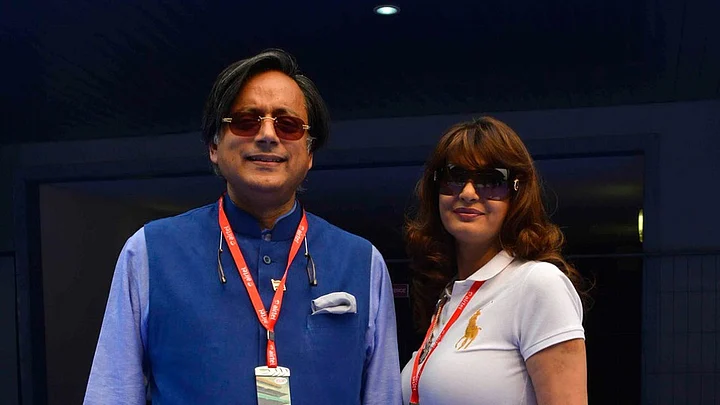The media frenzy surrounding the police’s investigation of the January 2013 death of Sunanda Pushkar, flamboyant Congress MP and former UPA minister Shashi Tharoor’s wife, is nauseating to say the least.
So when a usually genial Tharoor – uncharacteristically – retorted to media insinuations after a Delhi court allowed the police to conduct polygraph tests on three persons who had earlier been examined by the sleuths and are known to him, it was an expression of directing his agitation against uncalled for interest in a “personal tragedy.”
Salivating Media
There is no doubt that Sunanda’s death was sensational and quite naturally drew the media attention. Subsequent media stories, mostly unsubstantiated and baseless, or mere conjectures, ran through like bush fire, suggesting Sunanda had been murdered in Room No 345 of Leela Hotel in Delhi’s Chanakyapuri.
When the police took up investigations, it made a hash of the job, first claiming that Sunanda had committed suicide and then a year later lodging a case of murder.
This made the media salivate: the “murder” of an attractive lady, wife of an erudite Congress minister who exuded sophisticated charm and grace all the time was the stuff that titillating stories are made of.
It must have been because of the so-called under-hand dealings linked to Sunanda earning a “sweat equity” worth Rs 74 crore that led to the Kochi Tuskers cricket team becoming a part of the Indian Premier League, the media screamed.
No, there was a Dubai angle to Sunanda’s death, another section of the frenzied media pointed out. One TV new channel titled its Sunanda “murder” story as “KILLER”, dragging in Tharoor and making odious suggestions. The Indian media is a sucker for sensational conspiracy theories.
A Hash Job
The police too didn’t cover itself in glory. It took them a year to move from the suicide to the murder theory which had too many holes – large ones at that. The autopsy on Sunanda’s body indicated that death was due to poisoning.
Much later when a confirmatory second examination of her viscera was conducted, it reportedly revealed nothing more than identifying six poisonous substances, which Indian forensics laboratories are not equipped to trace, might have been used.
But neither the forensics experts nor the police could say with certainty how the poison was administered. Was it injected into Sunanda or was she made to ingest it? What was the basis for the panel of doctors to identify the six poisons, namely thallium, polonium-210, neriumoleader, snake venom, photolabile poisons and heroin?
Poisonous Concoction
And then in jumped the BJP’s rabble rouser Subramanian Swamy who alleged that polonium-210, a radioactive isotope, had been used to kill Sunanda.
The media went into another spin, throwing up the example of the mysterious death of a retired Russian Federal Security Service and KGB officer Alexander Litvinenko by polonium-210 which had been put in his tea.
I have written elsewhere that it is commonsense that if you have no idea what poison was used and how it was administered, how could the police lodge a murder case? It didn’t help the police case to send Sunanda’s viscera to the American Federal Bureau of Investigation for tracing out the poisonous substance.
In other words, the police had trashed the CFSL report that had initially concluded that any one of six poisons had been used to kill Sunanda!
Does it take five months – viscera samples were sent to the FBI in the US in January this year – for any sophisticated FBI lab to identify the poison?
If and when the matter goes up for trial, any defence lawyer will tear into the prosecution’s case of murder. Admittedly, Sunanda died in mysterious circumstances and there does seem to be a tantalising possibility of homicide. If the police has gathered more evidence that substantiates murder, it must first tie all the loose ends and build a solid case.
Leaking bits and pieces of unverified information to tickle the senses of the media can potentially damage reputations. The police must refrain from such unprofessional practices, which only exposes their incompetence.
(At The Quint, we question everything. Play an active role in shaping our journalism by becoming a member today.)
